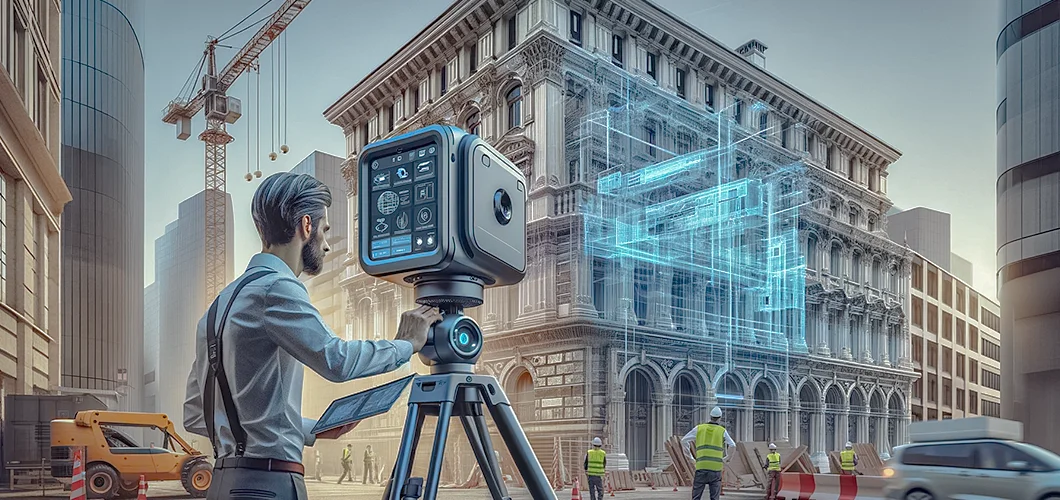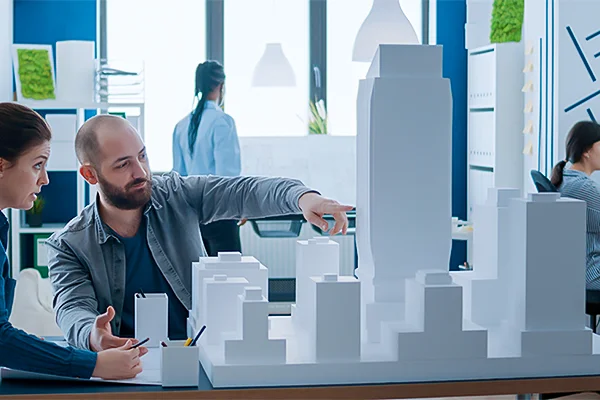
Everything You Need to Know About Scan to BIM
Do you guys wish to know all about the modern technologies that are shaping the world of construction and architecture? Do you want to know how Scan to BIM has revolutionized the way construction professionals work in the office and at the site? We are sure that you know that BIM has transformed the way structures are designed and constructed. But there is more to it. Allow us to share everything that you need to know about Scan to BIM in today’s blog!
What is Scan to BIM?
Scan to BIM is a process that enables the stakeholders to perform various operations. These operations go beyond data capture and involve the process of translating building structures into digital representations. Scan to BIM also offers a collaborative working environment which is crucial for informed decision-making. In addition to that, Scan to BIM also enhances project efficiency throughout its lifecycle.
Scan to BIM is a complex process and works on various principles. For example; it involves many scanning techniques which help in capturing accurate and highly intricate data. Scan to BIM also utilizes scanning techniques such as LiDAR to determine geometric data of the existing structures. When the data has been collected, it is then integrated into BIM from where the creation of precise 3D models begins.
Scan to BIM also enables the project teams to go through spatial information through which they can analyze building elements. Once the data is analyzed, the stakeholders are in a better position to finalize the next steps. A couple of decisions that can be made through the gathered data are clash detection, construction sequencing and facility management.
Applications of Scan to BIM
When it comes to Scan to BIM, we would like to mention that it has several applications. The best part about that is Scan to BIM hugely impacts the project workflows in several ways. Scan to BIM can be integrated into many different kinds of industries. And everyone can fully benefit from it to carry out their projects.
Allow us to share that Scan to BIM not only facilitates civil infrastructure projects but also covers renovations of cultural heritage as well. By utilizing Scan to BIM, the stakeholders find it easy to document projects, ensure the implementation of sustainable practices and more. Moreover, Scan to BIM is also great for data capturing of the as-built conditions. This data helps the project teams to make better and sustainable choices.
Before we jump to the next part of the blog, we would like to talk about how Scan to BIM is an excellent choice for all sorts of projects. Make sure that you keep reading the blog to know more and decide better!
For civil engineering projects, Scan to BIM offers both ease and accuracy when it comes to documentation and clash detection. In addition to that, it also facilitates site analysis through resource allocation while also fostering a seamless collaboration among teams. As far as the revocation projects are concerned, Scan to BIM ensures that it helps preserve historical buildings.
Related: BIM for Civil Engineers
Benefits of Scan to BIM

We are sure that you guys would also want to know about the many benefits of Scan to BIM so that you can integrate it into one of your upcoming projects. Allow us to share a couple of Scan to BIM benefits with you in this part of the blog!
In easy-to-understand words, Scan to BIM is a perfect choice to attain accuracy and efficiency in construction projects. In addition, the project teams also get to collaborate at any stage of the project to ensure that they are on the right track. But there is more to just that. For example; Scan to BIM also offers early clash detection and enables the project teams to resolve them before the construction process.
By doing so, they not only mitigate risks but also reduce project costs. Not to forget, Scan to BIM also helps in optimizing resource allocation which is another crucial part of a construction project.
Now, let’s explore how Scan to BIM is a better and more sustainable choice for various disciplines including architects, engineers and even facility managers.
Scan to BIM for Architects
Scan to BIM offers architects the ability to explore and visualize the existing conditions to work on their designs. With the help of the gathered data such as spatial relations among building elements, the architects can analyze and simulate building components – that too with accuracy and precision. We are sure that you guys are aware of how important accurate and precise data is for building any infrastructure.
Scan to BIM gives architects the confidence to carry out their domain-related operations while being at peace. With the gathered data, the architects can also discuss the various possibilities with their clients effectively.
Related: BIM for Architects
Scan to BIM for Engineers
Scan to BIM is also an effective solution for engineers as well. Continue reading the blog to learn how engineers benefit from this modern technology.
By utilizing Scan to BIM in projects, engineers can enjoy a streamlined process of converting the point cloud data into BIM models. Although this data is gathered through laser scanning and is error-free, we must mention that occasional errors can arise. And it’s the responsibility of the engineers to make sure that they keep the data error-free by regularly verifying it.
That said, engineers can utilize Scan to BIM to capture as-built conditions of an existing structure. By doing so, the engineers can work on and analyze their designs. In addition, they can also reach out to other project teams to discuss and lock various operations. All of that enables the engineers and the rest of the teams to maintain high levels of accuracy and productivity.
Scan to BIM for Facility Managers

When it comes to facilitating facility managers (FMs), allow us to mention that Scan to BIM offers cost-effective solutions to them. In addition, Scan to BIM also enhances the project efficiency and helps in ensuring successful project delivery.
Moreover, Scan to BIM enables facility managers to streamline their operations. For example; with the gathered data, FMs can get their hands on information regarding spatial layouts. In addition, they can also analyze asset inventories and update their maintenance needs. By doing so, they can efficiently ensure that the budget is being used effectively without increasing the project costs. Scan to BIM also helps FMs with clash detection and developing solutions to meet the set deadlines without any delays.
Challenges related to Scan to BIM
While BIM continues to transform the world of construction and architecture, there are a couple of challenges associated with it. In this part of the blog, we would like to talk about them for you to gather more insights into the overall process.
Nothing is free from challenges – not even the most advanced technological innovations. Scan to BIM is no different when it comes to considering that it also poses a couple of challenges. For example; diverse talent is working at construction companies which means that there are people who are more comfortable with traditional building methods. On the other hand, some individuals would like to switch to modern methods to get things done.
Now, change does not make everyone happy, right? But when it comes to incorporating a system as complex as Scan to BIM, there is a high chance that it won’t be welcomed just like that. This barrier won’t only cause disruptions within the teams but it can also impact the overall project as well.
Then comes a more technical challenge per se which is differing data. We know that scanners, etc. are designed to only capture accurate data but utilizing multiple scanning methods can get disparate data. Verifying and validating this kind of data can be a tiresome job especially if you are on tight deadlines. But to get your hands on precise data, it’s important to perform meticulous data processing to ensure accuracy and precision.
Here, we must also mention that Scan to BIM gets updated constantly to meet the latest advancement needs. In addition, it is also being improved to overcome the newest challenges that may arise during a project’s lifecycle. So, if you got a little icky after reading the above-mentioned challenges, we need you to know that Scan to BIM will continue to serve construction professionals.
Furthermore, this technological innovation will also help the stakeholders in building greener and more sustainable structures for the current and future generations. We are sure that once you’re done reading the blog, you would like to explore Scan to BIM services in detail. And while you do that, we must encourage you to get in touch with DDC Solutions. Here is why:
Our BIM consultants are always ready to guide and assist you in not only making wise decisions but also building infrastructures as per your requirements.
